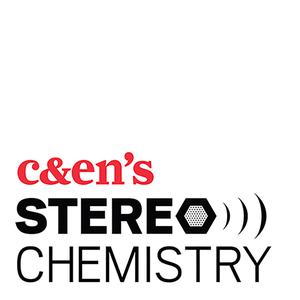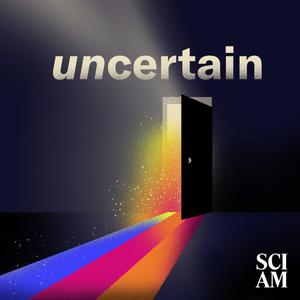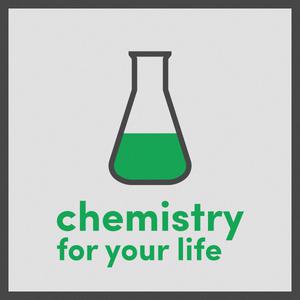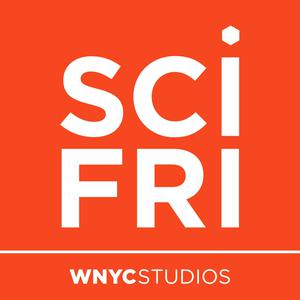
Stereo Chemistry
Chemical & Engineering News
- 19 minutes 39 secondsC&EN Uncovered: Indoor air monitoring goes to school
The COVID-19 pandemic put the importance of indoor air quality in stark relief. The air in schools was of particular concern, and that concern spurred collaboration between researchers and school staff to find interventions to improve air quality to safeguard the health of students and staff. Data from indoor air monitors revealed that filter-based portable air cleaners were effective at removing airborne particulates. Ongoing research and monitoring will determine whether this effort is making a beneficial health impact and will be used to decide how to manage indoor air quality going forward. C&EN Uncovered, a project from C&EN’s podcast, Stereo Chemistry, offers a deeper look at subjects from recent stories. Check out the full story about air quality monitoring in schools at cenm.ag/airqualityinschools.
Cover photo: Undergraduate student Ricardo Reyes collects air quality measurements from the back of a classroom in Colorado.
Subscribe to Stereo Chemistry now on Apple Podcasts, Spotify, or wherever you listen to podcasts.
A transcript of this episode will be available soon at cen.acs.org.
Credits
Executive producer: David Anderson
C&EN Uncovered host: Craig Bettenhausen
Reporter: Fionna Samuels
Audio editor: Ted Woods
Copyeditor: Brian Vickers
Episode artwork: Glenn Asakawa/University of Colorado Boulder
Music: “Hot Chocolate,” by Aves
Contact Stereo Chemistry: Contact us on social media at @cenmag or email [email protected].
27 November 2024, 2:00 pm - 27 minutes 49 secondsStereo Chemistry: How the Nobel Prize in Chemistry was won
On Oct. 9, the 2024 Nobel Prize for Chemistry was awarded to David Baker, Demis Hassabis, and John M. Jumper for their work in prediction and design of protein structures. C&EN’s executive editor for life sciences, Laura Howes, joins a special episode of Stereo Chemistry to discuss why the trio won, the significance of their work around proteins, and how she accurately predicted the win in C&EN’s annual “Who Will Win?” webinar.
Stereo Chemistry offers a deeper look at subjects from recent stories pulled from the pages of Chemical & Engineering News. Check out Laura’s story on how these computational chemists won this year’s Nobel Prize in Chemistry at cenm.ag/chemnobel2024.
29 October 2024, 6:00 pm - 22 minutes 47 secondsC&EN Uncovered: PhD to CEO, how chemistry entrepreneurs are making the jump
In the 20th century, corporate powerhouses like Bell Labs and DuPont Central Research funded R&D from their balance sheets, creating a clear path for postdoctoral scientists to innovate beyond their university research. In 2024, with the decay of corporate laboratories, graduates are taking the commercial start-up route more and more. C&EN, business reporter Matt Blois discusses several such start-ups, exploring how the founders are making the transition from PhD to CEO and mapping the various routes they've taken to secure funding to continue their research.
C&EN Uncovered, a project from C&EN’s podcast, Stereo Chemistry, offers a deeper look at subjects from recent stories. Check out Matt’s story on how PhDs are learning to become CEOs at cenm.ag/chementrepreneurs
Cover photo: Laura Stoy inside a laboratory at Rivalia Chemical
Subscribe to Stereo Chemistry now on Apple Podcasts, Spotify, or wherever you listen to podcasts.
A transcript of this episode is available at cen.acs.org.
Credits
Executive producer: David Anderson
C&EN Uncovered host: Craig Bettenhausen
Reporter: Matt Blois
Audio editor: Ted Woods
Copyeditor: Bran Vickers
Episode artwork: Jim Prisching
Music: “Hot Chocolate,” by Aves
Contact Stereo Chemistry: Contact us on social media at @cenmag or email [email protected].
30 September 2024, 3:00 pm - 20 minutes 47 secondsC&EN Uncovered: Solvent Waste Levels, EPA Regulations, and Disposal
On average, from 2011 to 2021, academic labs generated around 4,300 metric tons of hazardous waste each year. One of the largest lab-used solvents discarded is dichloromethane and more than half of that waste ends up burned. In today’s episode, policy reporters Krystal Vasquez and Leigh Krietsch Boerner dive into the processes academic labs use to dispose of said waste, the consequences of new EPA regulations around dichloromethane, and what solutions academic institutions are coming up with to accommodate these new rules.
C&EN Uncovered, a project from C&EN’s podcast, Stereo Chemistry, offers a deeper look at subjects from recent stories. Check out Krystal’s story on the new U.S. Environmental Protection Agency regulations regarding dichloromethane at https://cenm.ag/dcmregs and check out Leigh’s story about solvent waste disposal in academic laboratories at https://cenm.ag/wastedisposal.
Cover photo: Lab solvents C&EN July 15th cover photo
Subscribe to Stereo Chemistry now on Apple Podcasts, Spotify, or wherever you listen to podcasts.
A transcript of this episode will be available soon at cen.acs.org.
Credits
Executive producer(s): Gina Vitale, David Anderson
C&EN Uncovered host: Craig Bettenhausen
Reporter(s): Krystal Vasquez, Leigh Krietsch Boerner
Audio editor: Ted Woods
Copyeditor: Bran Vickers
Episode artwork: Will Ludwig
Music: “Hot Chocolate,” by Aves
Contact Stereo Chemistry: Contact us on social media at @cenmag or email [email protected]
30 August 2024, 3:00 pm - 18 minutes 54 secondsC&EN Uncovered: Ongoing tragedies in Flint and East Palestine
Tragedies in the communities of Flint, Michigan, and East Palestine, Ohio, continue to affect residents 10 years and 1 year on, respectively, from the initial events. Residents of both cities continue to rebound and rebuild despite ongoing issues revolving around the toxic chemicals that were introduced to their towns through human decisions.
C&EN physical sciences reporter Priyanka Runwal traveled to both Flint and East Palestine to speak with residents about how they are recovering, how the actions of their representatives have fallen short, and their hopes to return to something of a “normal” existence in the future.
C&EN Uncovered, a project from C&EN’s podcast, Stereo Chemistry, offers a deeper look at subjects from recent stories. Check out Priyanka’s cover story on Flint after 10 years at cenm.ag/flint; Check out Priyanka’s cover story on East Palestine at cenm.ag/eastpalestine
Cover photo: Residents of Flint, Michigan, march arm in arm as they demand justice and accountability for their community 10 years from the beginning of the water crisis.
Subscribe to Stereo Chemistry now on Apple Podcasts, Spotify, or wherever you listen to podcasts.
A transcript of this episode will be available soon at cen.acs.org.
Credits
Executive producer: Gina Vitale
C&EN Uncovered host: Craig Bettenhausen
Reporter: Priyanka Runwal
Audio editor: Ted Woods
Copyeditor: Bran Vickers
Story editor: Laura Howes
Episode artwork: Brittany Greeson
Music: “Hot Chocolate,” by Aves
Contact Stereo Chemistry: Contact us on social media at @cenmag or email [email protected].
19 July 2024, 3:00 pm - 19 minutes 3 secondsC&EN Uncovered: Can ‘forever chemicals’ be destroyed?
Per- and polyfluoroalkyl substances, a class of chemicals known as PFAS, are often called “forever chemicals” because of how long they persist in the environment. They are prevalent in drinking water and have been linked to negative health outcomes.
A slew of cleantech start-ups are cropping up with the aim of breaking down and destroying PFAS molecules. In this episode of C&EN Uncovered, reporter Britt Erickson explores the technologies behind these companies and the competition among them.
C&EN Uncovered, a project from C&EN’s podcast, Stereo Chemistry, offers a deeper look at subjects from recent stories. Check out Britt’s cover story on the destruction techniques for these “forever chemicals” at cenm.ag/foreverchemicals.
Cover photo: Argon gas plasma, which can break down PFAS, on the surface of liquid water
Subscribe to Stereo Chemistry now on Apple Podcasts, Spotify, or wherever you listen to podcasts.
A transcript of this episode is available now at cen.acs.org.
Credits
Executive producer: Gina Vitale
C&EN Uncovered host: Craig Bettenhausen
Reporter: Britt Erickson
Audio editor: Ted Woods
Copyeditor: Bran Vickers
Story editor: Michael McCoy
Episode artwork: Courtesy of Selma Mededovic Thagard/Clarkson University
Music: “Hot Chocolate,” by Aves
Contact Stereo Chemistry: Contact us on social media at @cenmag or email [email protected].
17 May 2024, 2:00 pm - 19 minutes 56 secondsC&EN Uncovered: The small-molecule drug renaissance
As the science of drug discovery has grown in scale and gotten more complicated, so have the drug molecules themselves. But there’s a promising class of drugs made of just a handful of atoms that punch above their weight by leveraging the natural chemistry of the cell.
Recent discoveries have opened up a new era of pharmaceutical chemistry that some people are calling a golden age. In this episode of C&EN Uncovered, reporter Laura Howes explains this exciting field of research and its implications for the drugs of the future.
C&EN Uncovered, a project from C&EN’s podcast, Stereo Chemistry, offers a deeper look at subjects from recent stories. Check out Laura’s cover story on small-molecule drugs at cenm.ag/smallmol.
Subscribe to Stereo Chemistry now on Apple Podcasts, Spotify, or wherever you listen to podcasts.
A transcript of this episode is available at cenm.ag/smallmolpod.
Credits
Executive producer: Gina Vitale
C&EN Uncovered host: Craig Bettenhausen
Reporter: Laura Howes
Audio editor: Brian Gutierrez
Copyeditor: Bran Vickers
Story editor: Mitch Jacoby
Episode artwork: Chris Gash
Music: “Hot Chocolate,” by Aves
Contact Stereo Chemistry: Contact us on social media at @cenmag or email [email protected].
9 February 2024, 7:00 pm - 15 minutes 57 secondsC&EN Uncovered: The ocean floor is littered with valuable minerals. Should we go get them?
Resting on the bottom of the ocean are potato-sized nodules of valuable minerals that are more or less up for grabs. Multiple corporations and some nations are racing to build deep-sea drones that can withstand the extreme conditions at the seafloor and bring these 1-20 cm nodules to eager buyers on the surface.
Many of the metals in these nodules are critical for green technologies like batteries. But these nodules are also an important part of ecosystems we are just beginning to understand. In this episode, C&EN reporter Priyanka Runwal chats with host Craig Bettenhausen about this complex issue.
C&EN Uncovered, a project from C&EN’s podcast, Stereo Chemistry, offers a deeper look at subjects from recent stories. Check out Runwal’s full story at cenm.ag/seafloormine.
For more about mining the oceans, check out this episode of Stereo Chemistry from earlier this year about filtering minerals directly out of the water: cenm.ag/ocean
Subscribe to Stereo Chemistry now on Apple Podcasts, Spotify, or wherever you listen to podcasts.
A transcript of this episode is available at cenm.ag/deapsea.
Credits
Executive producer: Gina Vitale
C&EN Uncovered host: Craig Bettenhausen
Reporter: Priyanka Runwal
Audio editor: Brian Gutierrez
Copyeditor: Bran Vickers
Story editor: Laura Howes
Episode artwork: Diva Amon/Craig Smith/University of Hawaii
Music: “Hot Chocolate,” by Aves
Contact Stereo Chemistry: Contact us on social media at @cenmag or email [email protected].
11 December 2023, 8:00 pm - 19 minutes 16 secondsC&EN Uncovered: The race to report on the Nobel Prizes
The Nobel Prize announcements are big events at Chemical & Engineering News. But we find out the winners at the same time as everyone else.
Then, the race is on for our reporters.
This year, staffers Laurel Oldach and Mitch Jacoby took on the task of covering the science prizes. In this episode, they reflect on this year’s winning research in chemistry and medicine and share what it’s like covering the most prestigious prizes in science.
C&EN Uncovered, a project from C&EN’s podcast, Stereo Chemistry, offers a deeper look at subjects from recent stories. Check out our reporting on the 2023 Nobel Prizes at https://cen.acs.org/magazine/101/10133.html.
Subscribe to Stereo Chemistry now on Apple Podcasts, Spotify, or wherever you listen to podcasts.
A transcript of this episode is available at cenm.ag/nobelpod23
Credits
Executive producer: Gina Vitale
Host: Gina Vitale
Reporters: Mitch Jacoby and Laura Oldach
Audio editor: Brian Gutierrez
Copyeditor: Bran Vickers
Story editor: Chris Gorski
Episode artwork: Milad Abolhasani/NCSU
Music: “Hot Chocolate,” by Aves
Contact Stereo Chemistry: Contact us on social media at @cenmag or email [email protected].
31 October 2023, 6:00 pm - 13 minutes 38 secondsC&EN Uncovered: Looking back on 100 years of chemistry
The first issue of C&EN was published in 1923 with the stated purpose of “the promotion of research, the development of the chemical industry, and the welfare of the chemist.”
The world of chemistry has grown a lot since then, and the magazine has been there to report on it all.
To celebrate our 100th anniversary, C&EN reporter and informal historian Alex Tullo has sifted through thousands of issues of the magazine, and in this episode, he guides our host Craig Bettenhausen on a tour through the magazine’s history from the industrialization of plastics, to the environmental movement, to the modern era of digital publication.
When this episode was recorded, Tullo was preparing the From the Archives feature for the 1980s, which is now published.
C&EN Uncovered, a project from C&EN’s podcast, Stereo Chemistry, offers a deeper look at subjects from recent stories. Read Alex’s entire series about the C&EN archives at cenm.ag/fromthearchives.
A transcript of this episode can be found at http://cenm.ag/100yearspod.
Credits
Executive producer: Gina Vitale
C&EN Uncovered host: Craig Bettenhausen
Reporter: Alex Tullo
Audio editor: Brian Gutierrez
Copyeditor: Bran Vickers
Story editor: Manny I. Fox Morone
Episode artwork: Shutterstock/Kay Youn/Will Ludwig/C&EN
Music: “Hot Chocolate” by Aves
Contact Stereo Chemistry: Contact us on social media @cenmag or email [email protected].
29 September 2023, 6:00 pm - 25 minutes 3 secondsJennifer DiStefano and Jared Mondschein on the transition from the bench to the policy office
Early-career scientists are increasingly gravitating toward science policy, but the transition from the research bench to the policy office can be a tricky one. What can that path look like, and how can chemistry knowledge translate into a successful science policy career? In this bonus episode of C&EN’s Bonding Time, Mark Feuer DiTusa sits down with recent science PhD graduates and science policy professionals Jennifer DiStefano and Jared Mondschein to hear about their intertwined journeys, what science policy looks like for them, and how they think policy is shaping the direction of chemistry in the US.
You can find the episode where we spoke with six chemists about their yearlong science policy fellowships in Washington, DC, at http://cenm.ag/lessons.
You can connect with Jennifer DiStefano and Jared Mondschein at their LinkedIn pages.
A transcript of this episode can be found at http://cenm.ag/scipolicy
Credits
Executive producer: Gina Vitale
Writer: Mark Feuer DiTusa
Audio editor: Mark Feuer DiTusa, Brian Gutierrez
Story editor: Ariana Remmel
Copyeditor: Sabrina Ashwell, Michael McCoy
Show logo design: William A. Ludwig
Episode artwork: William A. Ludwig
Music (in order of appearance): “The Beat Detector” by Novembers, "Sugar Cubes" by Avner Kelmer
Contact Stereo Chemistry: Tweet at us at @cenmag or email [email protected].
13 September 2023, 4:14 pm - More Episodes? Get the App
Your feedback is valuable to us. Should you encounter any bugs, glitches, lack of functionality or other problems, please email us on [email protected] or join Moon.FM Telegram Group where you can talk directly to the dev team who are happy to answer any queries.
 Science Magazine Podcast
Science Magazine Podcast
 Science Quickly
Science Quickly
 Chemistry For Your Life
Chemistry For Your Life
 Short Wave
Short Wave
 Science Friday
Science Friday
 Nature Podcast
Nature Podcast